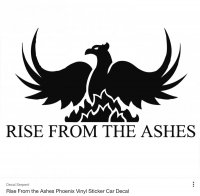... all write offs are recorded as a catorgy D which means is Not cost effected to repair the log book will be retained by the insurance company and passed back to the DVLA anyone buying the salvage has to re apply for a log book ...
... that's why keep the V5 in your name no changes to the V5 and no Class D...
John, a lot of what you have stated is very useful, however there are some errors related to the quoted extracts above, which I believe need to be corrected to ensure that others have the correct information.
To give some background to show that I do know the facts; earlier this year my car was side swiped by an undertaker on the motorway with the result that my car was written off. The other driver didn't stop or report to the police, however I had dashcam footage and the insurance claim ended up 100% in my favour. Like you I have lost faith in the police, who wouldn't follow up on the other driver with careless/dangerous or failing to stop/report collision.
I decided to accept the car car at salvage value, repaired it myself and I'm continuing to drive it. Note that once an vehicle is classified as category C or D (see below), the MOT is no longer valid and the vehicle will need to be re-tested to be road legal. Most insurance companies will insure these vehicles (but please check with your specific insurer), also do note that future claims will be based upon the revised value of the vehicle (usually 50% of a non cat C or D).
The facts that I'd like to correctly advise others of are these:
1) Not all write off's are recorded as category D, they can be A,B, C or D where categories A and B are damaged so badly they’ll never be legally allowed back on the roads, however category C & D are vehicles that have been written off but can be repaired and returned to the road. The difference between these categories is defined by the cost of repairs compared to the pre-accident value of the car. If the cost of making a car roadworthy exceeds its value, it is a Cat C; if less, it’s a Cat D, with the insurance assessor determining the categorisation.
In my case my car was deemed category C (it was a low value car), however after a professional full wheel alignment check (and before any work was done) to prove no misalignment, I could have safely driven it without any repairs at all because all of the damage was superficial.
2) Keeping the V5 has no bearing on the category classification because the insurance company is legally obliged to inform the DVLA and a marker will permanently added to their records and it is not possible to change this. Therefore when you come to sell the vehicle anyone performing a vehicle check will be made aware of the categorisation applied. Selling on Autotrader for example will also highlight this as well. Keeping the original paper copy would allow a seller to dupe someone via a cash private sale to someone that didn't do their own check on purchase and/or to sell the vehicle very quickly before the DVLA have added the marker and therefore initially hiding the write off state. However once the buyer receives their new V5 it will be stated on their V5 anyway, so keeping the V5 is of very limited use to law abiding people.
Please note that prior to October 2015 all Cat A, B & C vehicles required a Vehicle Identity Check (VIC) before a V5 would be issued, however after this date, a VIC is no longer required and V5's are now freely available for Cat C & D vehicle owners.
















